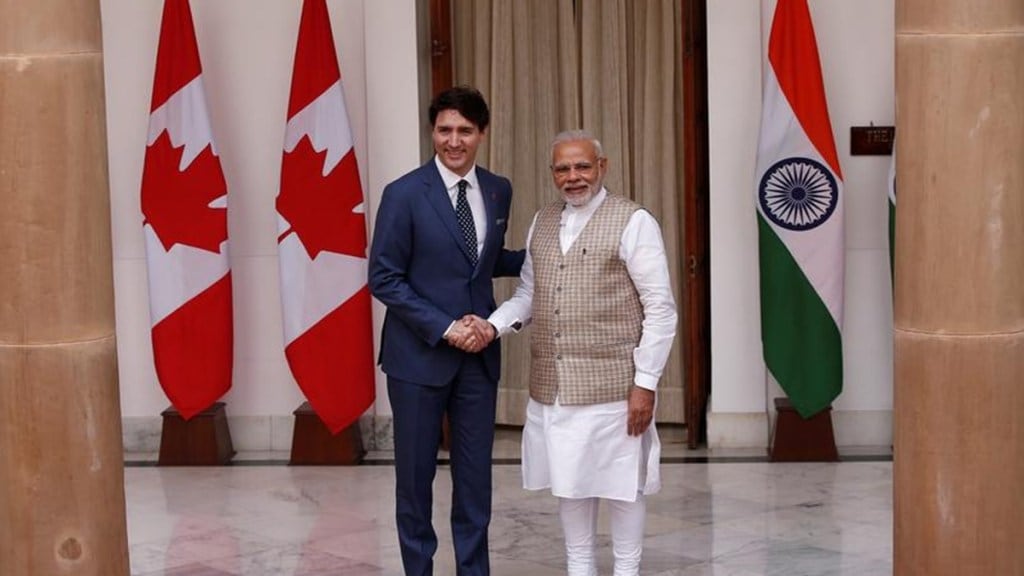Tensions have flared up between India and Canada, triggered by Canadian Prime Minister Justin Trudeau’s claims in Parliament that the Indian government may have “potential links” to the killing of Khalistani terrorist Harmeet Singh Nijjar on Canadian soil. Trudeau didn’t mince words, openly accusing India and demanding that justice take its course.
What makes this situation even more intriguing is the United States’ official confirmation on Saturday, a first in the history of diplomatic tensions, of “shared intelligence among Five Eyes partners” that allegedly informed Prime Minister Trudeau about the potential involvement of the Indian government in Nijjar’s death.
India, quick to refute these allegations, reportedly responded by temporarily suspending visa services for Canadians. This not only has implications for trade and immigration but also threatens to strain the relationships these countries hold with their Western allies.
The Public Accusation’s Global Ramifications
Canada finds itself in an uneasy position, with its top allies caught in the crossfire, just as the West seeks to strengthen its ties with India as a potential ally against China. The United States has even initiated the “Quad” alliance — the U.S., India, Australia, and Japan, as part of this strategy.
Understanding the Five Eyes Alliance
The Five Eyes Alliance is a unique multilateral arrangement wherein partner countries share a wide spectrum of intelligence. Their unity is founded upon common principles of upholding the rule of law, robust human rights, and a shared language. This collaboration aims to safeguard their mutual national interests through the exchange of critical information.
The Five Eyes, often referred to as FVEY, comprises five intelligence agencies:
The United States; The UK; Australia; New Zealand; and Canada.
Historical Roots and Evolution
The alliance’s roots trace back to World War II when the UK and the US began sharing intelligence, especially after successfully deciphering German and Japanese codes. The UKUSA agreement formalized this collaboration, with Canada joining in 1949, followed by New Zealand and Australia in 1956. The official acknowledgment of the UKUSA agreement only came in 2010 when its files were declassified.
Functioning of the Five Eyes Alliance
Based on the information in the public domain, these nations engage in intelligence gathering and security cooperation, with recent years witnessing increased alignment due to shared concerns, such as the rise of China. The Five Eyes Intelligence Oversight and Review Council serves as a crucial entity facilitating the exchange of perspectives, best practices, and annual in-person meetings among non-political intelligence oversight and review agencies from member countries.
Despite their proximity, the Five Eyes countries don’t always see eye to eye on foreign policies. Notably, New Zealand’s stance on certain Chinese actions differs from that of the other four nations due to its deep trade ties with China. The US has also sought to exert influence through other groupings like the Quad and AUKUS, involving like-minded countries in security matters.
Collaboration Beyond Borders
Beyond the core members, other countries, termed “third party partners,” also share information with the alliance. However, they do not hold formal partner status.
Function and Information Sharing
The Five Eyes alliance pools resources and shares intelligence. Over the decades, technological advancements have transformed how information is gathered and shared, transitioning from traditional methods to digital tracking and interception.
Notably, not all member countries contribute equally. A recent report by David Johnston on foreign interference highlighted that Canada benefits more from the alliance than it contributes. Four Canadian agencies participate in the Five Eyes:
- Communications Security Establishment (CSE), formerly known as Communications Security Establishment Canada (CSEC)
- The Royal Canadian Mounted Police (RCMP)
- Canadian Security Intelligence Service (CSIS)
- Canadian Forces Intelligence Command
Information sharing was initially intended for intelligence on foreign countries. However, the revelations of whistleblower Edward Snowden in 2013 exposed that the Five Eyes nations were not only spying on foreign countries and each other but also collecting and retaining data on their own citizens.
Five Eyes’ Role in the India-Canada Dispute
In the current India-Canada dispute, the Five Eyes partners could provide crucial additional or corroborating information to support Canadian intelligence evidence regarding the death of Harmeet Singh Nijjar. This may include details about involved individuals, operational methods, signals intelligence intercepts, or other pertinent knowledge.
International Law and Targeted Killings
Richard Fadden, former CSIS director and national security adviser to Canadian Prime Minister Stephen Harper, suggests that the allies could apply political and diplomatic pressure on India to ensure accountability for the incident and deter future actions of a similar nature.
However, the reluctance of other “eyes” to strongly support Canada against India may stem from international limitations, which constrain their ability to intervene effectively in such disputes. The complex web of international relations and diplomatic considerations often constrains nations’ responses to conflicts involving their allies and partners.
While the alliance can provide valuable support, resolving such conflicts ultimately hinges on a delicate balance of diplomatic efforts, international law, and political considerations.


